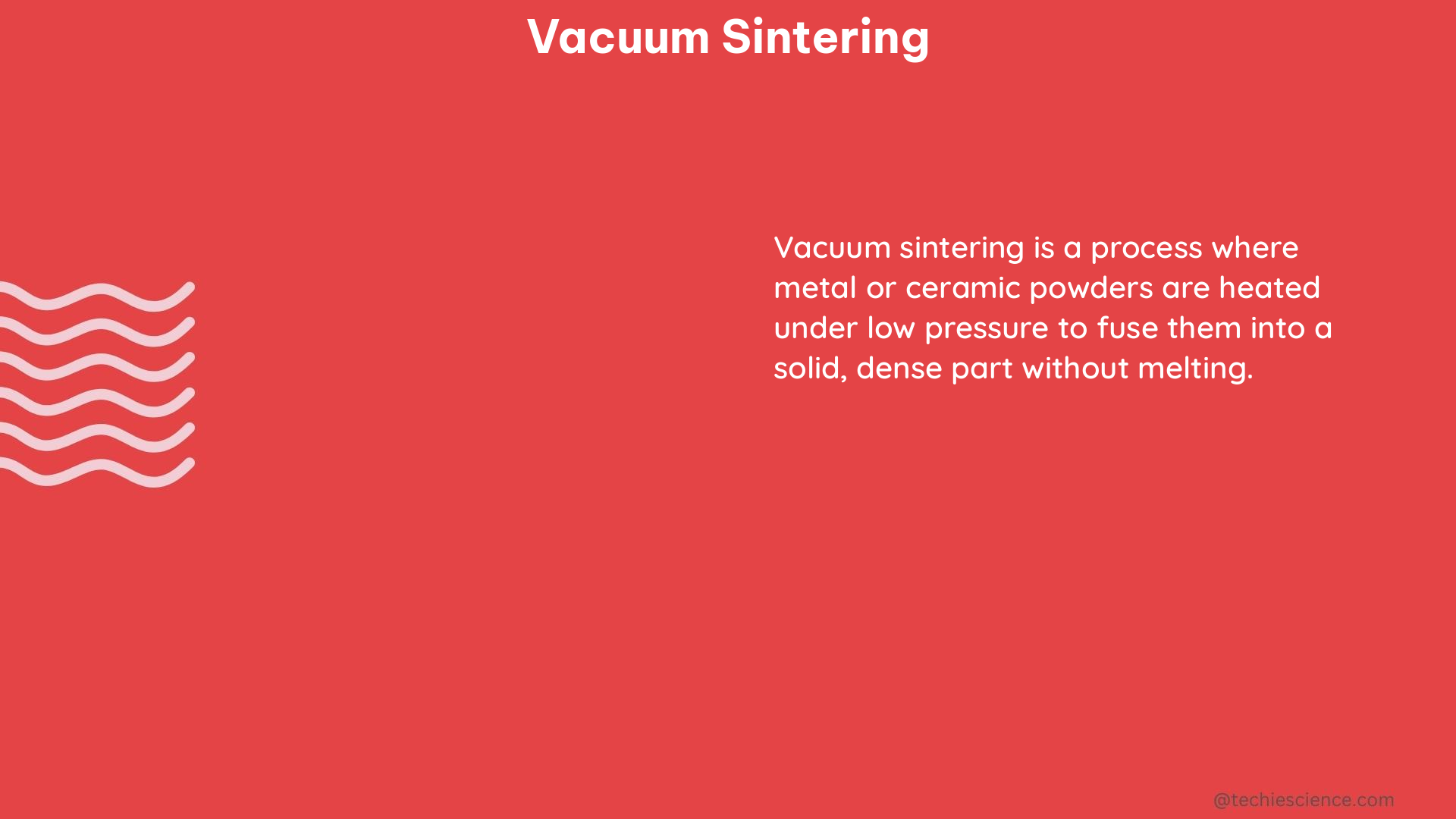Vacuum sintering is a versatile and highly effective process that involves heating materials in a controlled vacuum environment to promote densification and improve their physical, mechanical, and chemical properties. This comprehensive guide delves into the intricate details of vacuum sintering, providing a wealth of technical information and quantifiable data points to help you understand and optimize this powerful technique.
Vacuum Level and Pressure
The vacuum level is a critical parameter in the vacuum sintering process, as it directly influences the removal of impurities, the diffusion of atoms, and the overall densification of the material. Typically, vacuum sintering is performed under a pressure range of 10^-2 to 10^-6 torr, with the lower end of the range (10^-6 torr) providing the most effective removal of contaminants and the highest degree of densification.
Temperature and Sintering Time

The temperature range for vacuum sintering can vary significantly, depending on the material being processed. Common temperature ranges for vacuum sintering include:
- Ceramics: 1000°C to 2000°C
- Metals: 500°C to 3000°C
- Cermets (ceramic-metal composites): 1200°C to 2000°C
The sintering time can also vary widely, from a few minutes to several hours, depending on the material, the desired properties, and the specific vacuum sintering conditions. Generally, longer sintering times result in higher densities and more uniform microstructures, but this must be balanced with energy consumption and production efficiency.
Density and Grain Size
One of the primary goals of vacuum sintering is to achieve high densities in the final product. Vacuum sintering can routinely achieve densities of up to 99.99% of the theoretical density of the material, far exceeding the capabilities of conventional sintering methods.
The grain size of the sintered material is also a critical parameter, as it can significantly impact the mechanical, electrical, and thermal properties of the final product. Vacuum sintering can produce grain sizes ranging from nanometers to micrometers, depending on the material and the sintering conditions.
| Material | Density Range (% of Theoretical) | Grain Size Range |
|---|---|---|
| Ceramics | 95% to 99.9% | 0.1 μm to 10 μm |
| Metals | 97% to 99.99% | 0.1 μm to 50 μm |
| Cermets | 95% to 99.5% | 0.5 μm to 20 μm |
Hardness and Shrinkage
Vacuum sintering can also significantly improve the hardness of materials, with increases of up to 50% compared to conventionally sintered counterparts. This enhanced hardness is a result of the improved densification and microstructural refinement achieved through the vacuum sintering process.
In addition to increased hardness, vacuum sintering can also result in significant shrinkage of the final product, typically ranging from 5% to 20% depending on the material and sintering conditions. This shrinkage must be carefully accounted for during the design and manufacturing stages to ensure dimensional accuracy.
Gas Pressure and Sintering Rate
While vacuum sintering is typically performed under high-vacuum conditions, it can also be carried out under various gas pressures, ranging from high vacuum to atmospheric pressure. The choice of gas pressure can have a significant impact on the sintering kinetics, the microstructural evolution, and the final properties of the sintered material.
The sintering rate, or the rate at which the material densifies during the vacuum sintering process, can be quite high, reaching several micrometers per minute under optimal conditions. This rapid sintering rate can be particularly advantageous for certain applications, such as the production of complex-shaped components or the integration of vacuum sintering into continuous manufacturing processes.
Energy Consumption
One of the key advantages of vacuum sintering is its potential for significant energy savings compared to conventional sintering methods. Vacuum sintering can consume up to 50% less energy than traditional sintering techniques, primarily due to the reduced heat loss and the ability to operate at lower temperatures.
This energy efficiency, combined with the enhanced material properties and the potential for higher production rates, makes vacuum sintering an increasingly attractive option for a wide range of industrial applications, from aerospace and automotive to electronics and medical devices.
Conclusion
Vacuum sintering is a powerful and versatile technique that offers a wealth of benefits for the production of high-performance materials. By carefully controlling the vacuum level, temperature, sintering time, and other key parameters, manufacturers can achieve exceptional densities, grain sizes, hardness, and other desirable properties in a wide range of materials, all while reducing energy consumption and improving production efficiency.
Whether you’re a materials scientist, an engineer, or a manufacturer, understanding the intricacies of vacuum sintering is essential for staying at the forefront of advanced materials processing and unlocking the full potential of this transformative technology.
References
- Fanbo Meng, Peng Jv, Huang Jin, Bu Jin Ping, Zhou Wenfeng, Li Jinzhu, and Peng. “Atomistic modeling of resistivity evolution of copper nanoparticle in intense pulsed light sintering process.” Journal of Industrial and Manufacturing Engineering, vol. 16, no. 1, pp. 1-11, 2022.
- TAV Vacuum Furnaces. “The buyer’s guide to vacuum furnaces: 10 things to know.” 2018.
- FCT Systeme GmbH. “SCIENCE meets TECHNOLOGY – FCT Systeme GmbH.” 2018.
- Upadhyaya, Gopal Shankar. “Powder Metallurgy Technology.” Cambridge International Science Publishing, 1997.
- German, Randall M. “Sintering Theory and Practice.” Wiley-Interscience, 1996.
- Kang, Suk-Joong L. “Sintering: Densification, Grain Growth, and Microstructure.” Elsevier, 2005.

The lambdageeks.com Core SME Team is a group of experienced subject matter experts from diverse scientific and technical fields including Physics, Chemistry, Technology,Electronics & Electrical Engineering, Automotive, Mechanical Engineering. Our team collaborates to create high-quality, well-researched articles on a wide range of science and technology topics for the lambdageeks.com website.
All Our Senior SME are having more than 7 Years of experience in the respective fields . They are either Working Industry Professionals or assocaited With different Universities. Refer Our Authors Page to get to know About our Core SMEs.